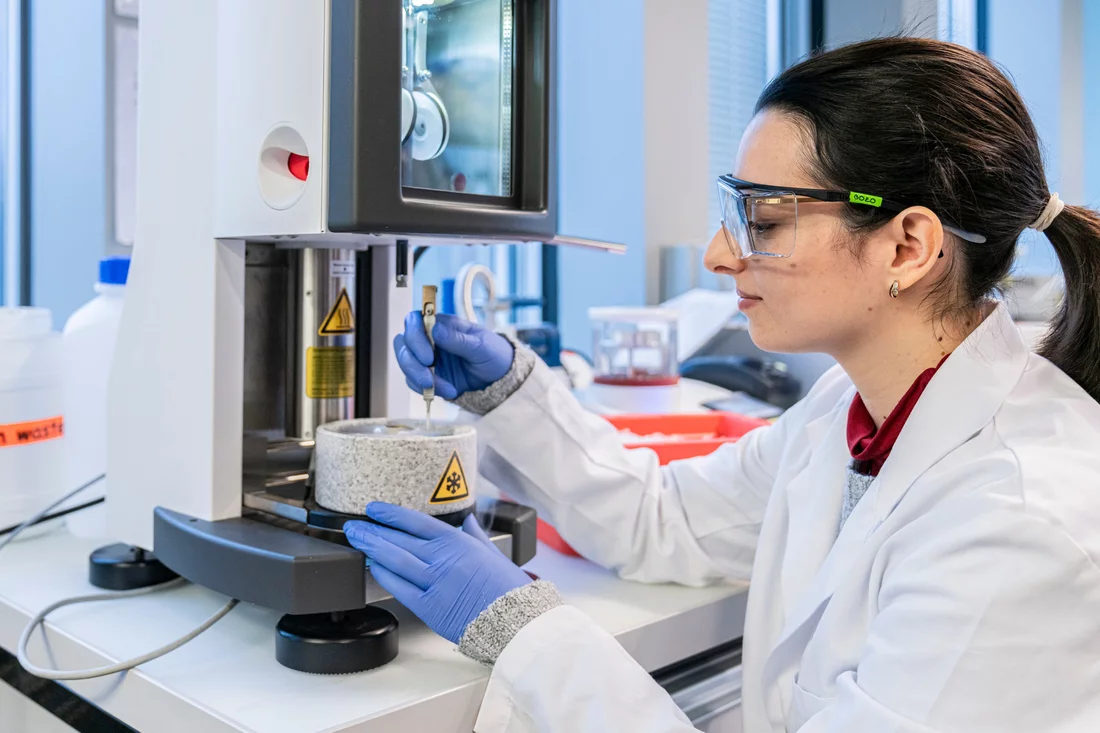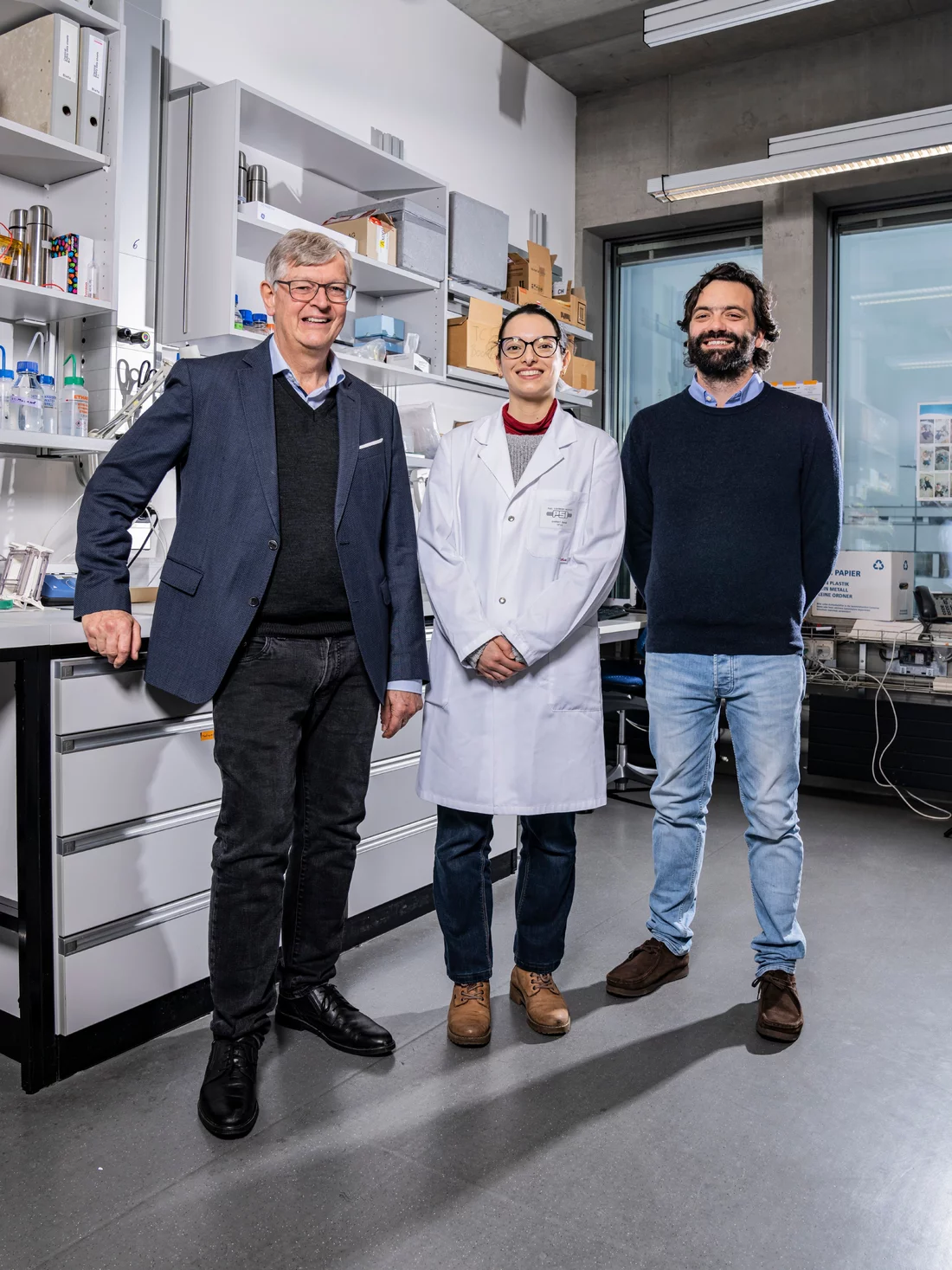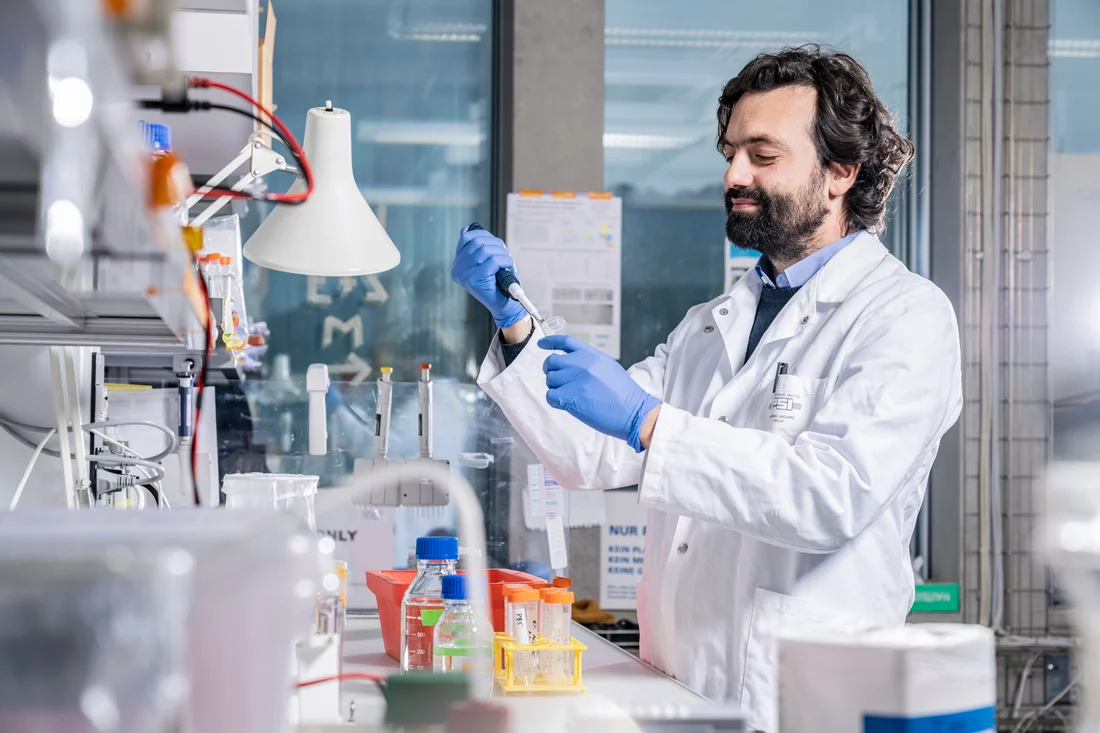PSI scientists have shed light on an important component of the eye: a protein in the rod cells of the retina which helps us see in dim light. Acting as an ion channel in the cell membrane, the protein is responsible for relaying the optical signal from the eye to the brain. If a genetic disorder disrupts the molecular function in a person, they will go blind. Scientists have deciphered the protein’s three-dimensional structure, preparing the way for innovative medical treatments. The study is published in the scientific journal Nature Structural & Molecular Biology.
"It’s thanks to the rod cells in our eye that we can observe the stars in the night sky," explains Jacopo Marino, a biologist with PSI’s Laboratory of Biomolecular Research. "These photo cells are so sensitive to light that they can detect even a single photon reaching us from a very remote part of the universe – a truly incredible feat." The ability of our brain to eventually translate these light beams into a visual impression is partly down to the cyclic nucleotide-gated (CNG) ion channels whose three-dimensional structure has now been illuminated by a PSI research group led by Jacopo Marino.
The ion channel acts as a gatekeeper controlling whether specific particles are allowed through to the interior of the receptor cell. It is embedded in the protein-rich shell – the cell membrane – of the rod cells. In darkness, the ion channel, and thus the gate to the cell, is completely open. But when light hits the eye, it triggers a cascade of processes in the rod cells. This ultimately causes the gate to close, with the result that positively charged particles, such as calcium ions, can no longer enter into the cell.
This electrochemical signal continues via the nerve cells into the brain’s visual cortex, where a visual impression – such as a flash of light – is created. "The idea of solving the structure of this channel dates back to nearly 20 years ago, when Gebhard Schertler and Benjamin Kaupp already collaborated on this topic," says Jacopo Marino. Both are co-authors of the new study.
Endurance paid off
PhD student Diane Barret first had to extract the channel protein from cows’ eyes supplied by an abattoir – a complicated and arduous process. "This was a very challenging task, as the protein is extremely sensitive and decomposes very quickly. In addition, it is only available in tiny quantities in the source material," Barret explains. It took a whole two years to obtain enough protein to work with. "We were both too stubborn to simply give up," says Jacopo Marino, laughing. "But in the end that stubbornness paid off."
The scientists then used cryo-electron microscopy to reveal the three-dimensional structure of the ion channel. "In contrast to previous studies on the structure of the ion channel, we investigated the native protein as it exists in the eye. We are therefore much closer to the real conditions that exist in living creatures," Diane Barret says.
One of the reasons why a clearer understanding of the channel protein’s natural structure is important is to advance the development of treatments for genetic disorders for which there is no known cure, such as retinitis pigmentosa. With this disease, photoreceptors gradually die off, leaving people blind. One possible cause is that the body is unable to correctly produce the CNG channel protein due to a genetic defect. As a result, the ion channel does not close completely when light hits the eye, disrupting the cell’s electrochemical balance and causing the cells to die.
"If we could find molecules that affect the protein in such a way that the channel would completely close, we could prevent the cells from dying – and thus stop people going blind," explains Jacopo Marino. Now that researchers have identified the precise structure of the protein they are able to search specifically for such molecules.
Additional barrier
The protein comprises four parts: three lots of subunit A, and one lot of subunit B. A correctly functioning ion channel is only possible in this combination. In their study, PSI scientists show why the B subunit seems to play such an important role: a side arm of the protein – a single amino acid – protrudes from the rest of the protein, like a barrier across a gateway. This narrows the passage in the channel to the point where no ions can pass through.
"No one expected that – it came as a total surprise," says Diane Barret. Other narrow places already exist in the A subunit – like main gateways – which were previously thought to be the only ones. It is interesting to note that the additional barrier is found not only in the protein from the cow’s eye, but seems to apply to all types of animal, as the scientists showed. Whether crocodiles, eagles or humans – all living creatures with an ion channel in their eye have the same protruding amino acid at this position in the protein. As it has been preserved so consistently during evolution, it must be essential for the functioning of the channel.
About PSI
The Paul Scherrer Institute PSI develops, builds and operates large, complex research facilities and makes them available to the national and international research community. The institute's own key research priorities are in the fields of future technologies, energy and climate, health innovation and fundamentals of nature. PSI is committed to the training of future generations. Therefore about one quarter of our staff are post-docs, post-graduates or apprentices. Altogether PSI employs 2300 people, thus being the largest research institute in Switzerland. The annual budget amounts to approximately CHF 460 million. PSI is part of the ETH Domain, with the other members being the two Swiss Federal Institutes of Technology, ETH Zurich and EPFL Lausanne, as well as Eawag (Swiss Federal Institute of Aquatic Science and Technology), Empa (Swiss Federal Laboratories for Materials Science and Technology) and WSL (Swiss Federal Institute for Forest, Snow and Landscape Research). (Last updated in June 2024)
Contact
Original publication
-
Barret DCA, Schertler GFX, Benjamin Kaupp U, Marino J
The structure of the native CNGA1/CNGB1 CNG channel from bovine retinal rods
Nature Structural and Molecular Biology. 2022; 29(1): 32-39. https://doi.org/10.1038/s41594-021-00700-8
DORA PSI



